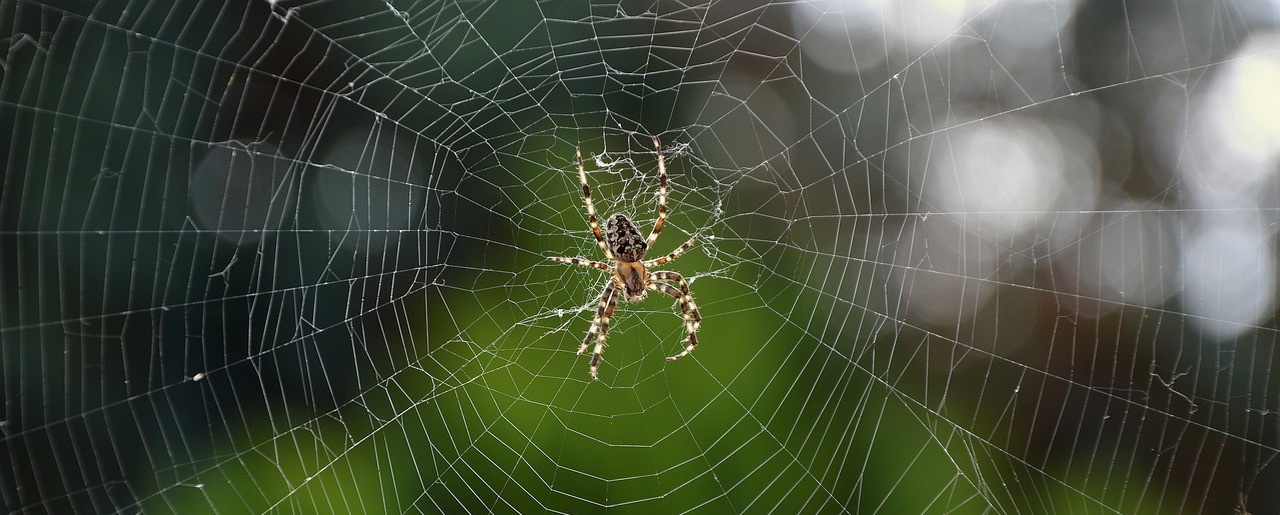Picture the scene: the sun is rising over the tropical forests of north-eastern Madagascar. After a hard night’s work searching for files and other prey down on the marshes, you’re looking for a place to sit back and wait out the heat of the day. You are, of course, one of Madagascar’s colourful tree frogs and currently your main priority is finding a shelter with sufficient shade to protect you from the dehydrating onslaught of the sun’s rays. You stumble upon what seems like the perfect place. An oasis of cool air trapped in the hollow between two leaves that seem to be inexplicably stuck together. You climb up the leaves’ stalks and crawl into your refuge, ready to settle in for a good long nap. Then you see it. A dark figure hiding at the edge of your sanctuary. Suddenly it’s upon you and before you have the chance to process what’s happening, it’s all over. You’re spider food.
It may all sound a little over dramatic, but according to a paper recently published in the journal Ecology and Evolution, this may well be the fate awaiting many of Madagascar’s most colourful residents. A word of warning – if eight legged creepy crawlies aren’t your thing, you might want to look away now. The study focuses on a species of huntsman spider within the Damnusastes genus, which is believed to have evolved a cunning strategy to entrap its froggy prey.

Researchers, led by Thio Fulgence, found that the spiders use their silk to weave together two leaves – still attached to the tree – to create a hollow known as a retreat. In fact, the researchers observed spiders hiding in these homemade retreats on four separate occasions, with these arachnid architects seemingly able to construct their hideaways on several tree species. However, it was the observation of a spider feeding on one unlucky frog just outside its retreat that led researchers to conclude that rather than simply provide a habitat for the spiders, the retreat also played a key role in the arachnid’s predation strategy. They propose that the spiders construct their retreats to act as a deliberate trap for nocturnal prey, including tree frogs, seeking shelter during the daytime. This saves the spider the effort of going out to hunt prey – basically the arachnid equivalent of getting a takeaway delivered.
Whilst the findings seem like a reversal of the expected natural order of things (we normally expect vertebrates to prey upon invertebrates, not the other way around), they’re certainly not without precedent. Several invertebrate predators are known to consume vertebrate prey, including dragonfly larvae that hunt tadpoles, praying mantises that prey upon lizards, and even giant water bugs that can predate turtles. Similarly, several species of spider are known to hunt vertebrates, and with their soft skin and small size, amphibians make ideal prey.

The findings also fit with the hunting strategies of several other huntsman species. Most spiders within the huntsman group do not capture their prey using a web; instead, they actively chase down their victims before immobilizing them using venom from their powerful fangs. The Damnusastes genus, to which this frog catching spider belongs, is however an exception, with most species choosing to employ a “sit-and-wait” approach to hunting. This, researchers claim, supports their theory that these spiders build their retreats as deliberate traps, in which they can then lie in wait for the arrival of their prey.
However, the team behind the study are keen to point out that their hypothesis is supported only by a limited number of observations and so further research is needed to confirm their theory. Indeed, there are other possible explanations as to why the spiders may go to the effort of constructing their retreats. For instance, the shelters may serve to protect the spiders from predators. Or, rather than acting as a trap to lure unwitting victims into the arms (or should that be legs?) of a hungry spider, they may simply act as a den from which the spiders ambush their prey. Even if the retreats do act as traps, it is not yet clear if they are engineered solely to catch tree frogs, or if they are also used to hunt other forms of prey.
Clearly further studies need to be conducted, but if the team’s theory were to be proved right it would likely be a first within the animal kingdom. No other spider is known to construct traps with the specific aim of capturing vertebrate prey. Either way, it’s probably best if our froggy little friends find somewhere else to rest their head from now on.
By Nathan Greenwood
Header image: Pixabay

